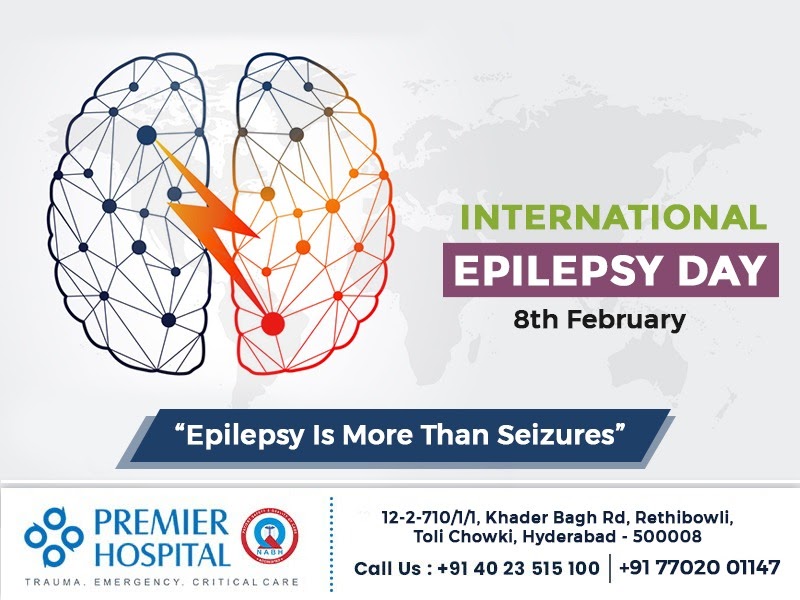World Epilepsy Day 2020
by Premier Hospitals | February 8, 2021 |
Children are the source of your joy and happiness and that's why even the slightest disturbance to them cause great sore to their parents. One can imagine their situation when their young ones go through certain serious health issues.  For instance, seizures and epilepsy are one of the challenging health issues facing by many children. International Epilepsy Day, 8 February 2021 - “Epilepsy is more than seizures†Every year International Epilepsy Day is celebrated on the second Monday of February as a special event to promote awareness of epilepsy condition. More than 130 countries create awareness programmes each year. People all around the world join together to support and highlight the lethal problems facing by people with epilepsy, their families and caretakers. Our epilepsy doctors at Premier Hospital, as a part of this awareness program educating people and making them understand the seriousness of epilepsy. If your children having any problems contact our specialist as soon as possible and save your children from suffering. Epilepsy When there is an enduring predisposition of seizures it is called epilepsy. Simply, epilepsy is a brain condition which causes seizures. It is one of the most common nervous systems disorders. It can affect people of any age from children to adults of all races and backgrounds. An epileptic seizure is said to be an abnormal electrical activity in your brain. It is a state of neurological activity that feels like a shock wave travelling through the brain and recurrence of these repetitive unprovoked seizures is called epilepsy. Seizures A seizure is a translate occurrence of symptoms resulting from abnormal electrical activity in the brain. People commonly think that a seizure means shaking moments of the whole body associated with fall, biting tongue and frothing. But they can also exhibit as blank stares, shaking off one part of the body, falling suddenly, sudden jerks, abnormal sensation involving vision loss, hearing problems or with emotions like fear and laughter. A seizure can occur in a newborn to an older child. Difference between seizure and epilepsy Primarily, a seizure is a symptom whereas epilepsy is a disorder. All seizure does not justify the definition of epilepsy condition. For instance, a seizure caused by low sugar, electrolyte imbalances etc. would not be labelled as epilepsy. If two or more seizures occur without clear reason within 24 hours, it is considered as epilepsy. Causes Seizures can affect a person due to various reasons. Some of the common reasons are acute causes like infection, electrolyte imbalances, low sugar levels, head trauma, drug ingestions, herbal medications which contain camphor, eucalyptus oil etc. They can also be familial and genetic. Whereas epilepsy is triggered due to certain health conditions like brain tumours, strokes, brain infections, neurological defects, lack of oxygen to the brain, hyperpyrexia etc. Traumatic head and brain injuries, specific genetic conditions, smoking and drinking alcohol also lead to epilepsy. Types of seizures Seizures among children are of different types. The common types include:- Generalized tonic-clonic seizure (GTC) - where is the whole body involved
- Absence seizure- blank stares and unresponsiveness
- Atonic seizure - partial or complete loss of muscle tone
- Myoclonic seizure - sudden jerking off whole or part of the body
- Move the child to a safe place and turn the child to the left side. Call or ask for medical help immediately.Â
- When the child is seizing does not insert fingers in their mouth as it can cause serious injuries to fingers and also increases the risk of pushing food particles/secretions into lungs which would be life-threatening.
- Do not search for keys or object while the child is seizing as it would waste valuable time and is of no use. Instead, stay with him and comfort the child.
- For children with frequent and prolonged seizers, prescribed medication can be given into the nose which ceases the seizures.



















